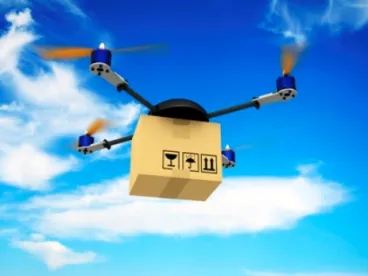The new Part 107 FAA Rules take effect today, Monday, August 29, 2016. Unlike the previous requirements for flying a drone commercially1, the new rules are much more simplistic and permissive of a broad amount of commercial drone usage.
Here’s what you need to know:
1. To fly a drone commercially, there are now four major requirements:
-
be at least sixteen years old;
-
register your drone online;
-
pass an aviation knowledge test administered at an FAA-approved testing center2; and
-
pass review by the Transportation Security Administration.
2. There are still restrictions, though. Without a waiver from certain provisions in the FAA’s Part 107 rule3, you cannot:
-
fly after dusk or before dawn;
-
fly faster than 100 mph;
-
fly over people not directly participating in the drone’s operation;
-
fly above 400 feet altitude;
-
fly outside of the pilot’s visual line of sight; or
-
fly in controlled airspace (check the B4UFLY app for mobile devices).
You may request a wavier of these restrictions via an online portal at www.faa.gov/uas.
3. Expect delays.
The FAA has undertaken a myriad of improvements to their website, the mobile apps for drone users, and ramped up their staffing to help process waiver applications.4 However, there are already over 3,000 people signed up to take the aviation knowledge test and another 20,000 more newly registered drones on the FAA website anticipating taking the test as soon as possible.5
4. What if you already hold a Section 333 Exemption and/or a Certificate of Authorization?
If you already hold a Section 333 exemption and/or a Certificate of Authorization, you have the choice of flying under the provisions of Part 107 or continuing to operate your drone using your existing exemption. Your exemption is valid until it expires. If you instead would like to operate under the new Part 107 regulations, you need to obtain a remote pilot certificate6 and follow all of the rule’s operating provisions. And, if you already have a Certificate of Waiver or Authorization (COA) under your Section 333 exemption, you can continue to fly under the COA limitations until it expires without the need to obtain a Part 107 waiver.
5. Drone Considerations for the Project Owner, Contractor and Design Professional.
Despite the FAA’s less restrictive path to launching a drone on your construction site, there are still various practical considerations through which a project owner, contractor and design professional must parse. From use notices to ownership of the electronic data to drone insurance, it is still very much the Wild West out there. Please check out: “Dozers and Dump Trucks and Drones? Oh My.”
1 Barbara J. Jordan, On The Rise—Operating a Drone For Commercial Purposes (April 15, 2016), available at here
2 “A person who already holds a pilot certificate issued under 14 CFR part 61 and has successfully completed a flight review within the previous 24 months can complete a part 107 online training course at www.faasafety.gov to satisfy this requirement.” FAA, Fly for Work/Business, http://www.faa.gov/uas/getting_started/fly_for_work_business/ (last visited 10:28 AM EST).
3 This is not an all-encompassing list of the rules within FAA’s Part 107. To read the provisions of the rule, please visit the FAA’s website at http://www.faa.gov/uas/getting_started/fly_for_work_business/becoming_a_pilot/.
4 Melanie Zonona, Feds Brace for New Drone Rules to Take Flight, THE HILL, available at http://thehill.com/policy/transportation/293485-feds-brace-for-new-drone-rules-to-take-flight (Aug. 28, 2016 @ 9:00 AM EST).
5 Bart Jansen, Drone Rule Takes Effect Monday Awaited by Thousands, USA TODAY, available at http://www.usatoday.com/story/news/2016/08/24/drone-rule/89276370 (August 24, 2016 @ 5:09 PM EST).
6 See note 2.


 />i
/>i
